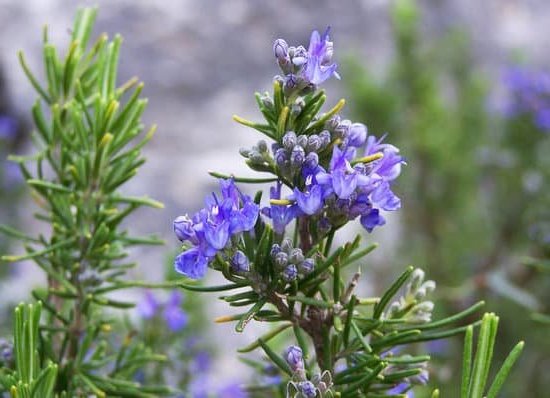Peppermint, with its refreshing and invigorating scent, is a popular choice for aromatherapy enthusiasts seeking natural remedies. Aromatherapy involves the use of essential oils extracted from plants to promote physical, emotional, and mental well-being. Peppermint essential oil is known for its cooling effect and ability to relieve headaches and improve focus. But, is peppermint good for aromatherapy? Let’s delve deeper into the history, benefits, properties, usage, scientific research, and precautions surrounding peppermint in aromatherapy.
The use of peppermint in aromatherapy dates back centuries, with ancient civilizations like the Egyptians and Romans recognizing its therapeutic properties. The distinct aroma of peppermint has been valued for its ability to uplift the mood, enhance clarity of thought, and provide relief from various ailments. Today, peppermint continues to be a staple in many aromatherapy practices due to its versatile nature and numerous benefits.
Peppermint essential oil is rich in menthol and menthone compounds that contribute to its analgesic, anti-inflammatory, antimicrobial, and energizing properties. These qualities make it a valuable addition to aromatherapy blends designed to alleviate muscle pain, respiratory issues, digestive discomfort, stress-related symptoms, and more. Understanding the unique properties of peppermint essential oil can help individuals maximize its potential benefits when incorporating it into their aromatherapy routines.
The History of Peppermint and Aromatherapy
Peppermint has a rich history dating back to ancient times, where it was used for medicinal and aromatic purposes. The use of peppermint in aromatherapy can be traced back to the ancient Egyptians, who cultivated and utilized this versatile plant for its healing properties. The Greeks and Romans also valued peppermint for its therapeutic benefits, using it to alleviate digestive issues, headaches, and even bad breath.
Throughout history, peppermint has been recognized for its invigorating scent and calming effects on the mind and body. In traditional Chinese medicine, peppermint was believed to help clear heat and soothe the liver. Additionally, the Europeans have long used peppermint to aid in digestion and promote overall well-being. Its refreshing aroma is known to uplift the spirits and promote mental clarity.
In modern times, the practice of aromatherapy has gained popularity as a natural way to improve health and well-being. Peppermint essential oil is revered for its versatile uses in aromatherapy. With its cooling sensation and minty fragrance, peppermint essential oil is commonly used to relieve headaches, nausea, muscle pain, and stress. Incorporating peppermint into your aromatherapy routine can have a positive impact on both your physical and emotional health.
The Benefits of Aromatherapy
Aromatherapy has gained popularity in recent years as a holistic healing practice that utilizes the therapeutic properties of essential oils to promote physical, emotional, and mental well-being. One of the most commonly used essential oils in aromatherapy is peppermint oil, known for its invigorating and cooling scent. Peppermint essential oil is derived from the leaves of the peppermint plant and has been used for centuries for its numerous health benefits.
Stress Relief and Relaxation
Peppermint essential oil is well-known for its ability to reduce stress, anxiety, and mental fatigue. When diffused or inhaled, the refreshing aroma of peppermint can help calm the mind, improve focus, and promote relaxation. The soothing scent of peppermint can also help alleviate tension headaches and migraines by promoting better blood circulation.
Respiratory Support
Peppermint oil is a natural decongestant and expectorant, making it an excellent choice for supporting respiratory health. Inhaling peppermint essential oil can help clear nasal passages, reduce inflammation in the airways, and relieve symptoms of respiratory conditions such as asthma, bronchitis, and sinusitis. Additionally, peppermint oil has antimicrobial properties that can help fight off colds and respiratory infections.
Improving Digestive Health
Peppermint essential oil is widely used for its digestive benefits. It can help soothe indigestion, bloating, gas, and stomach cramps. Peppermint oil works by relaxing the muscles in the digestive tract to ease discomfort and promote healthy digestion.
Adding a few drops of peppermint oil to a carrier oil and massaging it onto the abdomen can provide quick relief from digestive issues. Overall, using peppermint for aromatherapy can be a beneficial addition to your wellness routine to support both physical and emotional health.
The Properties of Peppermint Essential Oil
Peppermint essential oil is derived from the leaves of the peppermint plant through a process called steam distillation. This oil contains numerous beneficial properties that make it a popular choice for aromatherapy. One of the key components of peppermint essential oil is menthol, which is known for its cooling and soothing effects on both the body and mind. This makes peppermint oil a go-to option for relieving sore muscles, headaches, and mental fatigue.
In addition to its menthol content, peppermint essential oil also possesses antibacterial, antiviral, and anti-inflammatory properties. These properties not only help in fighting off infections but also aid in reducing inflammation in the body. Peppermint oil is commonly used in aromatherapy to improve respiratory function due to its ability to clear congestion and promote easier breathing. Its invigorating scent can also help boost energy levels and enhance mental clarity.
Peppermint essential oil is widely used in aromatherapy as it provides a refreshing and uplifting aroma that can help alleviate stress, anxiety, and depression. The minty fragrance is known to stimulate the mind and improve focus, making it a great choice for enhancing concentration during work or study sessions. Whether used alone or in combination with other essential oils, peppermint oil is a versatile option that can be diffused, inhaled directly, or applied topically (when diluted) for various therapeutic benefits.
| Beneficial Properties | Effects |
|---|---|
| Menthol | Cooling and soothing effects on body and mind |
| Antibacterial, Antiviral | Fighting off infections |
| Anti-inflammatory | Reducing inflammation in the body |
How to Use Peppermint for Aromatherapy
Peppermint essential oil is a popular choice for aromatherapy due to its refreshing and invigorating properties. Here are some effective ways to incorporate peppermint into your aromatherapy routine:
- Diffuser: Add a few drops of peppermint essential oil to a diffuser filled with water. The diffuser will disperse the oil into the air, creating a fresh and energizing atmosphere in your space.
- Steam Inhalation: Boil some water, pour it into a bowl, and add a few drops of peppermint oil. Lean over the bowl with a towel covering your head and inhale the steam deeply. This can help clear sinuses and promote mental clarity.
- Topical Application: Mix a few drops of peppermint oil with a carrier oil like coconut or almond oil. Use this blend for massage, focusing on areas that need relief from tension or soreness.
Peppermint’s cooling effect and invigorating scent make it an excellent choice for boosting focus and concentration during work or study sessions. Additionally, using peppermint in aromatherapy before physical activity can enhance energy levels and motivation.
Incorporating peppermint into your aromatherapy routine can provide numerous benefits for both the mind and body. Whether you prefer diffusing it in the air, using it for steam inhalation, or applying it topically, this versatile essential oil is sure to elevate your overall well-being. Experiment with different methods of using peppermint in aromatherapy to discover what works best for you.
Scientific Research Supporting Peppermint in Aromatherapy
Peppermint has long been used in aromatherapy for its refreshing and invigorating qualities. However, the question remains – is peppermint truly good for aromatherapy, backed by scientific research? Studies have shown that peppermint essential oil contains active components such as menthol and menthone that contribute to its therapeutic benefits when used in aromatherapy.
Antimicrobial Properties
Research has indicated that peppermint essential oil possesses antimicrobial properties that can help in fighting off certain pathogens. A study published in the Journal of Molecular Sciences found that peppermint oil exhibited strong antimicrobial activity against a variety of bacteria and fungi. This makes it a valuable tool in promoting overall well-being through aromatherapy.
Mood Enhancement
Another area where scientific research supports the use of peppermint in aromatherapy is its mood-enhancing effects. A study conducted by the University of Maryland Medical Center revealed that inhaling the scent of peppermint essential oil can help reduce feelings of fatigue and increase alertness. This makes peppermint a great choice for those looking to boost their mood and mental focus through aromatherapy sessions.
Pain Relief
Peppermint essential oil is also known for its analgesic properties, making it an effective option for pain relief when used in aromatherapy. Research published in the International Journal of Clinical Practice showed that peppermint oil, when applied topically or inhaled, can help alleviate headaches and muscle pain. This further solidifies the claim that peppermint is indeed a beneficial choice for incorporating into your aromatherapy routine.
Possible Side Effects and Precautions of Using Peppermint in Aromatherapy
Peppermint essential oil is a popular choice in aromatherapy due to its refreshing and invigorating scent, as well as its potential health benefits. However, it is essential to be aware of the possible side effects and precautions when using peppermint in aromatherapy. While peppermint is generally considered safe for inhalation or topical use when diluted properly, there are some important considerations to keep in mind.
One of the main precautions to take when using peppermint essential oil in aromatherapy is to always dilute it with a carrier oil before applying it to the skin. Undiluted peppermint oil can cause skin irritation, especially for those with sensitive skin. It is recommended to do a patch test on a small area of skin before using peppermint oil more widely on the body.
In addition to skin sensitivity, some individuals may experience allergic reactions to peppermint oil. If you have known allergies to mint plants or essential oils, it is advisable to avoid using peppermint in aromatherapy. Furthermore, ingesting large amounts of pure peppermint essential oil can be toxic and should be avoided at all costs. Always follow recommended dosages and consult with a healthcare professional if you have any concerns about using peppermint for aromatherapy purposes.
| Possible Side Effects | Precautions |
|---|---|
| Skin irritation | Dilute with carrier oil before applying topically |
| Allergic reactions | Avoid if known allergies to mint plants or oils |
| Toxicity | Avoid ingesting large amounts, consult a healthcare professional |
Conclusion
In conclusion, it is evident that peppermint is indeed an excellent choice for aromatherapy due to its numerous benefits and properties. Throughout history, peppermint has been known for its refreshing and invigorating scent, making it a popular choice in aromatherapy practices. The essential oil of peppermint has been studied extensively, revealing its unique properties that contribute to its therapeutic effects on both the mind and body.
Research supporting the use of peppermint in aromatherapy continues to grow, with various studies highlighting its ability to reduce stress, improve mental clarity, relieve headaches, and alleviate symptoms of respiratory conditions. Whether used through inhalation or topical application, peppermint essential oil has shown promising results in enhancing overall well-being and promoting relaxation.
While peppermint is generally safe for most individuals when used properly, it is important to be aware of possible side effects and precautions associated with its use in aromatherapy. It is recommended to perform a patch test before using peppermint essential oil topically and to consult with a healthcare professional if you have any underlying health concerns.
With its refreshing aroma and multitude of benefits, peppermint remains a versatile and effective option for those looking to incorporate aromatherapy into their wellness routine.
Frequently Asked Questions
What Does Peppermint Do in Aromatherapy?
Peppermint essential oil is often used in aromatherapy for its invigorating, refreshing, and uplifting qualities. It is believed to help improve focus, mental clarity, and alertness. The scent of peppermint can also help alleviate feelings of nausea and promote respiratory health.
Is Peppermint a Good Essential Oil to Breathe In?
Inhaling peppermint essential oil can be beneficial for respiratory issues such as congestion and sinusitis due to its anti-inflammatory and decongestant properties. It may also help relieve headaches and migraines when inhaled. However, it’s essential to use caution as some individuals may be sensitive to the strong aroma of peppermint.
Is Peppermint Safe to Diffuse?
Peppermint is generally considered safe to diffuse in well-ventilated areas when used in moderation. It can create a fresh, minty atmosphere that promotes relaxation and mental clarity.
However, if diffused excessively or used without dilution, peppermint oil may cause skin irritation or respiratory issues in some individuals. It’s always best to consult with a healthcare professional before using essential oils for diffusion purposes.

Are you looking for a natural way to improve your health and wellbeing?
If so, aromatherapy may be the answer for you.





